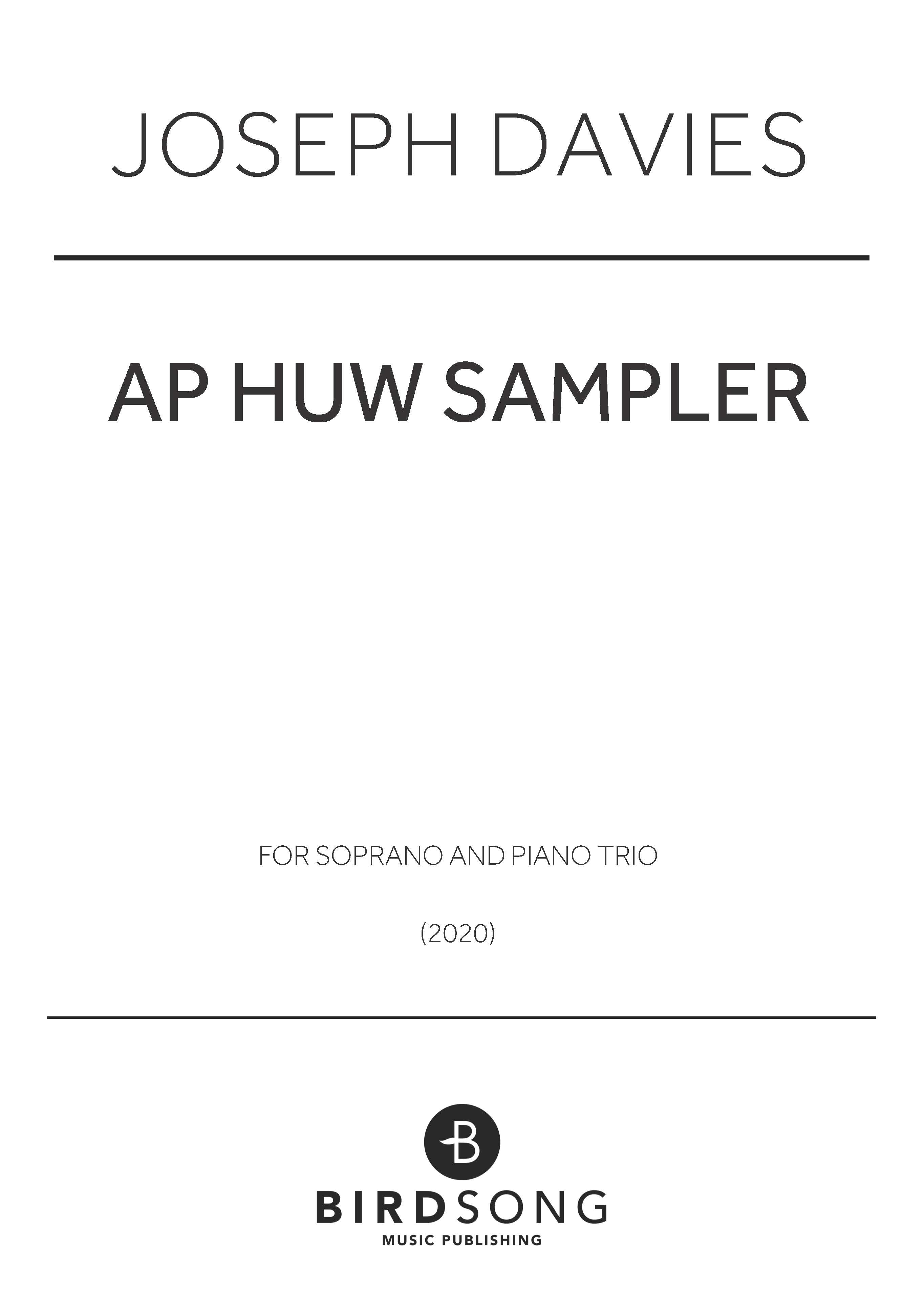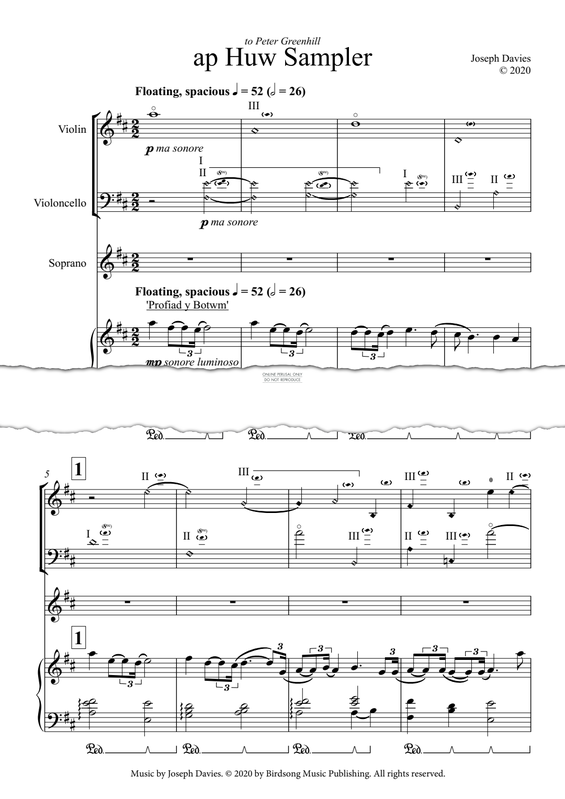
ap Huw Sampler (Piano, Violin, Cello, Soprano Voice, Ensemble)
- Sheet Music Download PDF
Joseph Davies


ap Huw Sampler (Piano, Violin, Cello, Soprano Voice, Ensemble)
- Sheet Music Download PDF
Joseph Davies
Details
| Product number: | fbd-44318 |
|---|---|
| Arrangement: | Ensemble |
| Instruments: | Cello, Piano, Violin, Vocal |
| Genre: | Classical |
| Classical: | Classical 21th Century, Classical in general, Concert piece, Contemporary |
| Ensemble: | Kammer Ensemble |
| Vocal: | Soprano |
| Artist: | Joseph Davies |
| Authors: | Joseph Davies, Joseph Davies |
| Pages: | 17 |
| Publisher: | Birdsong |
| Supported apps: |

|
Commissioned by Canolfan Gerdd William Mathias for the 2020 Wales International Piano Festival with support from:
Ty Cerdd, Cyngor Celfyddydau Cmru, Foyle Foundation & Colwinston Charitable Trust
First Performance: Powis Hall, Bangor University 06.09.2021
Programme Notes
This piece takes as its starting point two pieces from the oldest surviving manuscript of European harp music (and indeed one of the only extant sources of secular Medieval music), made by Welsh harper and poet Robert ap Huw (c.1 580-1 665) on Anglesey around 1 61 3. By that time these pieces were already part of a dying tradition dating from centuries earlier. They have been painstakingly and convincingly reconstructed by Peter Greenhill from the manuscript’s apparently mysterious tablature notation, to whom I am indebted for sharing his expertise, and offer a glimpse into a musical world of crystalline geometry and beautiful modal harmony simultaneously strange and familiar to modern ears: the original courtly cerdd dant (‘string craft’) tradition.
The ‘sampler’ of my title works in two senses: on the one hand the piece presents a small glimpse of the musical world of the ap Huw, and on the other it embeds this material in the context of my own instrumental style and techniques in the manner of sampling in electronic music. The piano plays exclusively notes from the manuscript, first a slow piece, Profiad y Botwm (‘Prelude of the Button/Boss’) segueing into the livelier Caniad y Gwyn Bibydd (‘Song of the White Piper’). Around this the strings and soprano weave drones, auras, canons and variations, often acting as a kind of resonating chamber for the piano. The singer is treated as an equal instrument in the ensemble, singing mostly vocalise apart from a single couplet from a poem by Owain ap Llywelyn ab y Moel (fl.1 470-1 500) describing the kind of metal-strung harp on which these pieces would have been played:
Dwy blaid deg sy’n dyblu tir,
deuryw gildant â’r goldwir
(‘Two fair parties make the land double,
two sorts of treble strings with the goldwire’)
- Joseph Davies
Performance Notes
To aid the legibility of rhythms, both white and black diamond noteheads have been used for the string harmonics so that minims and crotchets can be identified without any further annotation.
The soprano is treated as an equal voice in the ensemble in this piece, and should therefore not attempt to project too strongly over the dynamic of the surrounding musical texture at any point. Ideally they would be seated, next to the string players.
The 'b's and 'd's in the vocalise should be so soft as to be almost unvoiced; just enough to aid clarity between the notes.
At fig. 16:
wa = 'far'
we = 'wet'
wo = 'got'
wu = 'move'
Again the 'w's here should be very subtle, just enough to aid the rhythmic changes of vowel sound.
In the piano, the arpeggiando chords are to be spread just before the beat with the top note falling on the beat, so for example in the very first bar the left hand F# will land together with the right hand A.
Duration: c. 7'
Login

 Payment methods
Payment methods

























